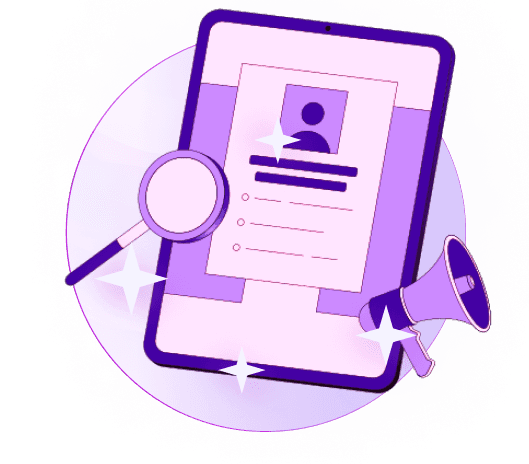Blogs
Articles

A Guide to Outbound Marketing Strategies
Did you know that outbound marketing strategies make up 90% of business marketing budgets?
Outbound marketing doesn't wait for customers to discover you. It actively seeks potential customers through paid and direct methods. These techniques deliver impressive results when your business needs to reach specific audiences fast.
Look at Alyce's success story. Their gift-focused campaign to promote a new partnership scored a 63% gift acceptance rate and created 18% new business opportunities. This shows what well-planned outbound marketing can do.
The marketing world keeps changing in 2024. Traditional outbound methods still work but now blend with digital approaches. Recent data shows the most successful outbound tactics are search engine marketing (81.48% of marketers use it), social media advertising (77.78%), and cold emailing (62.96%).
In this piece, we'll get into the outbound marketing strategies that work to connect with prospects before they show interest in what you offer. You'll learn how these methods stack up against inbound marketing and see real examples you can use in your business today.
What is outbound marketing?
Outbound marketing takes a proactive stance as businesses reach out to potential customers and push their message to target audiences. This traditional marketing method works because reaching more people increases conversion chances.
Outbound marketing means promoting your brand to people who haven't shown interest in your products or services yet. The interruptive nature of this approach makes it a "spray and pray" method where companies broadcast messages to get customer attention.
Common outbound marketing channels include:
Cold calling and cold emailing
TV, radio, and print advertisements
Billboards and direct mail
Trade shows and event sponsorships
Social media advertising and pay-per-click campaigns
Outbound marketing's biggest advantage is its quick results. Interested customers usually respond fast to your outreach. This approach also helps promote your brand directly and creates awareness among people who might never find your business otherwise.
Outbound vs inbound marketing: key differences
The main difference between outbound and inbound marketing lies in who makes the first move. Outbound marketing pushes messages to prospects, while inbound marketing draws customers in with content that solves their problems.
Inbound marketing earns attention through valuable content, search engine optimization, and social media. This approach attracts prospects who actively look for information or solutions.
Outbound marketing tends to be more targeted and personalized, while inbound marketing reaches broader audiences. ROI measurement comes easier with outbound strategies, which show results within 1-3 months compared to inbound's 6-12 month timeline.
Many successful businesses use both approaches together, even as inbound marketing grows more popular. Your specific business goals, target audience, and available resources determine the best strategy.
What are outbound marketing strategies?
Outbound marketing strategies help businesses reach potential customers before they express interest in products or services. These strategies focus on direct contact with targeted audiences through different channels.
A successful outbound marketing strategy needs these essential components:
Clear marketing goals - You need to decide between building awareness or launching new products
Defined target audience - Your ideal customer's demographics, behaviors, and motivations
Appropriate budget allocation - Some channels like TV or trade shows might cost more
Content type and approach - Messages that connect with your audience and stand out from competitors
Consistent tone - Your choice of humor, data, visuals, or personal appeals that strike a chord with targets
Result tracking systems - Ways to measure success and grow new leads
Outbound marketing works well alone or as part of a larger omnichannel marketing campaign. The main goal is building an audience, testing product ideas, and closing more sales.
The most effective campaigns build individual connections and stay relevant throughout the customer's experience. This tailored approach helps companies handle criticism that outbound tactics might interrupt or disrupt.
Businesses can take control of their go-to-market strategy with outbound marketing instead of waiting for inbound techniques to deliver results. Most marketers know that focusing only on one approach limits success. The real discussion should explore how to use both methods strategically.
Effective outbound strategies let businesses connect with qualified leads actively. This gives them better control over messaging, timing, and audience selection.
8 Effective Outbound Marketing Strategies
The right outbound marketing strategies can boost your brand's reach and drive conversions. These proactive approaches help businesses connect with potential customers directly instead of waiting for organic discovery.
1. Cold emailing with personalization
Personalized cold emails get better engagement than generic messages. Adding recipient-specific details doubles open rates and boosts response rates by 140%. Good personalization goes beyond using a prospect's name—you need to research their activities, achievements, and pain points.
The most successful personalized emails include:
References to recent professional accomplishments
Mentions of mutual connections or shared interests
Relevant content that addresses their industry challenges
One expert puts it simply: "Show 'em you know 'em" by checking their website, LinkedIn profile, and company news before reaching out.
2. Cold emailing
Cold emailing works well when done right, despite what many think. Research shows 36% of sales professionals use email to reach prospects, and 23% say it's their most effective outreach method.
Your emails should be conversational yet professional. Don't overuse personal information and always include a clear call-to-action. Remember to plan follow-up sequences—most people don't respond to initial emails, so following up becomes crucial for conversion.
3. Social media advertising
Social media ads let you target specific audiences while delivering great returns. The market brought in USD 207 billion in revenue in 2023, making it digital advertising's second-largest segment.
These ads work great for building brand awareness and blend naturally into users' feeds, avoiding organic content's algorithm limits. Most marketers (77%) use retargeting in their Facebook and Instagram campaigns to reconnect with prospects who showed interest.
4. Search engine marketing (PPC)
Pay-per-click advertising puts you right at the top of search results. You bid on relevant keywords and pay only when users click your ads. Your ad position depends on two key factors: maximum bid amount and Quality Score.
Good PPC management needs constant fine-tuning—cutting wasted spending, testing ad variations, and improving keyword targeting to get the best returns. Automated campaigns need careful oversight to bring in quality leads and conversions.
5. Trade shows and in-person events
B2B companies value in-person events more than ever, five years after the pandemic. Face-to-face meetings build trust and connections that virtual meetings can't match.
Well-planned trade shows can bring in a large portion of your yearly leads. Success takes months of preparation—from booth design and promotional materials to staff training and lead capture systems.
6. Influencer and affiliate marketing
Mixing influencer reach with affiliate metrics creates a strong outbound strategy. Influencer affiliate marketing uses creators' credibility while paying for actual sales. This approach helps you scale on a budget—you mainly pay for results, not just exposure.
Create better outbound campaigns by analyzing your current strategy with tools from Persana. Their platform helps you find tactics that will work best for your business needs.
Conclusion
Outbound marketing packs a punch for businesses that want quick results and direct customer connections. This piece shows how proactive strategies like personalized cold emails, social media advertising, and trade show participation can boost your marketing efforts by a lot. These techniques help you reach potential customers before they show interest in your products or services.
Data proves that outbound marketing belongs in your overall strategy. Smart companies don't see marketing as a choice between outbound and inbound approaches. They combine both methods to maximize their reach and effectiveness.
A personal touch makes modern outbound marketing stand out. Tailored emails highlighting specific achievements or targeted social media ads turn potentially disruptive messages into welcome communications. Your business should create relevant, thoughtful outbound campaigns that strike a chord with specific audience segments.
Your success depends on picking the right mix of outbound strategies that match your business goals. Some companies thrive with PPC advertising's immediacy or relationship-building at in-person events. Others need an all-encompassing approach across multiple channels to make the biggest impact. You can learn which outbound marketing tactics suit your needs by utilizing the analytics and strategy tools at Persana.
The marketing scene changes faster each day, but one truth stays constant - businesses that reach out to potential customers gain an edge over competitors. Thoughtful implementation of these outbound marketing strategies helps you build brand awareness, generate qualified leads, and drive conversions while you retain control of your marketing destiny.
FAQ
What are the 4 marketing strategies?
Businesses commonly employ these four core marketing strategies:
Market Penetration - This strategy boosts market share in existing markets through competitive pricing, better marketing efforts, product improvements, and wider distribution.
Market Development - Companies expand into new markets and geographic areas or demographic segments to tap into specific niches.
Product Development - The focus lies on creating new products or modifying existing ones. This meets current market needs, builds customer loyalty, and captures market share from competitors.
Diversification - Companies enter new markets or develop fresh products to create new opportunities. While this strategy carries the most risk, it can deliver higher returns.
What is B2B outbound marketing?
B2B outbound marketing happens when companies take the initiative to reach potential business customers rather than waiting for them to find your products. Companies can start conversations and connect with other businesses through strategic channels. These include cold calling, social media outreach, email marketing, and trade show participation. This approach helps companies connect with decision-makers, gather market intelligence, and create messages that address specific business challenges.
What are the 4 types of targeting strategies in marketing?
Here are the four main targeting strategies:
Undifferentiated Marketing (Mass Marketing) - This approach treats the target market as one large group and appeals to as many people as possible.
Differentiated Marketing (Multi-Segment) - Companies create separate offerings for different segments. Products stand out by meeting unique customer needs.
Concentrated Marketing (Niche Marketing) - Resources focus on one or few specific segments to serve a specialized market.
Customized Marketing (One-to-One) - This strategy targets individual consumers with tailored products. It's

Create Your Free Persana Account Today
Join 5000+ GTM leaders who are using Persana for their outbound needs.
How Persana increases your sales results
One of the most effective ways to ensure sales cycle consistency is by using AI-driven automation. A solution like Persana, and its AI SDR - Nia, helps you streamline significant parts of your sales process, including prospecting, outreach personalization, and follow-up.



